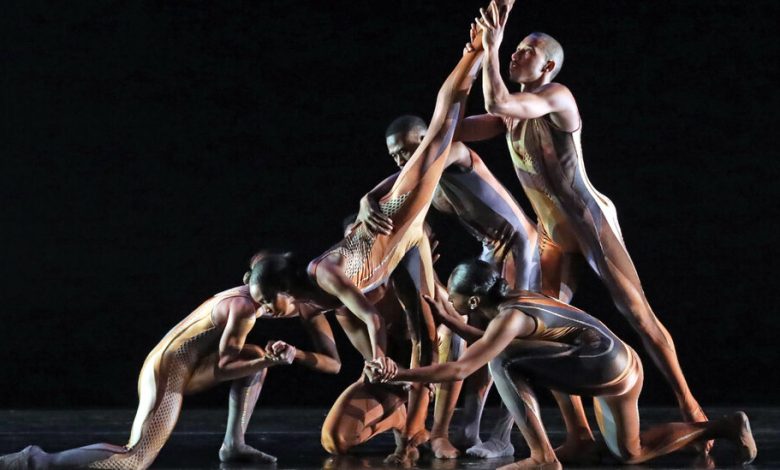Review: Showing Off Rock-Solid Technique and Some Erotic Acrobatics

Philadanco! is a company in transition. A few years ago, Joan Myers Brown, the pathbreaking institution builder who founded the Philadelphia Dance Company in 1970, stepped aside, installing Kim Y. Bears-Bailey as artistic director. But when the troupe returned to the Joyce Theater on Tuesday for the first time since the handover, it looked pretty much the same as ever.
There they were — the impressively skilled dancers with the speed, sharpness and stamina, the rock-solid balances and spins. There was the Philadanco! give-it-your-all spirit. And there was the choreography that showed all that off but rarely suggested a deeper artistry.
The program — oddly titled “Intangible!,” as if the exclamation point recently added to the company name were contagious — features four New York premieres. The first, “From Dystopia to Our Declaration” by Nijawwon Matthews, is the murkiest. Fifteen dancers sit in dimness, supervised by some kind of overseer. They move in mechanical tandem, snapping their heads back, until one (the striking Raven Joseph) stands and points. She somehow leads the way to freedom, though that journey is hobbled by Dave August’s score, which is cinematic in a crude sense.
“Mating Season,” by Christopher Rudd, is much clearer. Rudd is on the rise; two of his works have recently been performed by American Ballet Theater. Here, he arranges three couples in erotic acrobatics. The women throw a leg up on the men’s shoulders, hook a foot on a neck and lean back. A man and a woman somersault while conjoined, and finish by turning that bodily circle into a rectangle. A man holds a woman over his head, upside down with her legs spread, and they spin.
So it goes, inventive and applause-getting and sometimes beautiful, to music (by Loscil and Tariq Al-Sabir) that is unobtrusive electronic burbling. A program note asserts that rejecting the shame of attraction will promote gender equity. Toward the end, there’s a flash of same-gender partnering, and choreography from the beginning is repeated with the gender ratio reversed, now two women supporting a man. Throughout, the men have been mounting supine women, but in the final image the women are on top.
We are having trouble retrieving the article content.
Please enable JavaScript in your browser settings.
Thank you for your patience while we verify access. If you are in Reader mode please exit and log into your Times account, or subscribe for all of The Times.
Thank you for your patience while we verify access.
Already a subscriber? Log in.
Want all of The Times? Subscribe.
